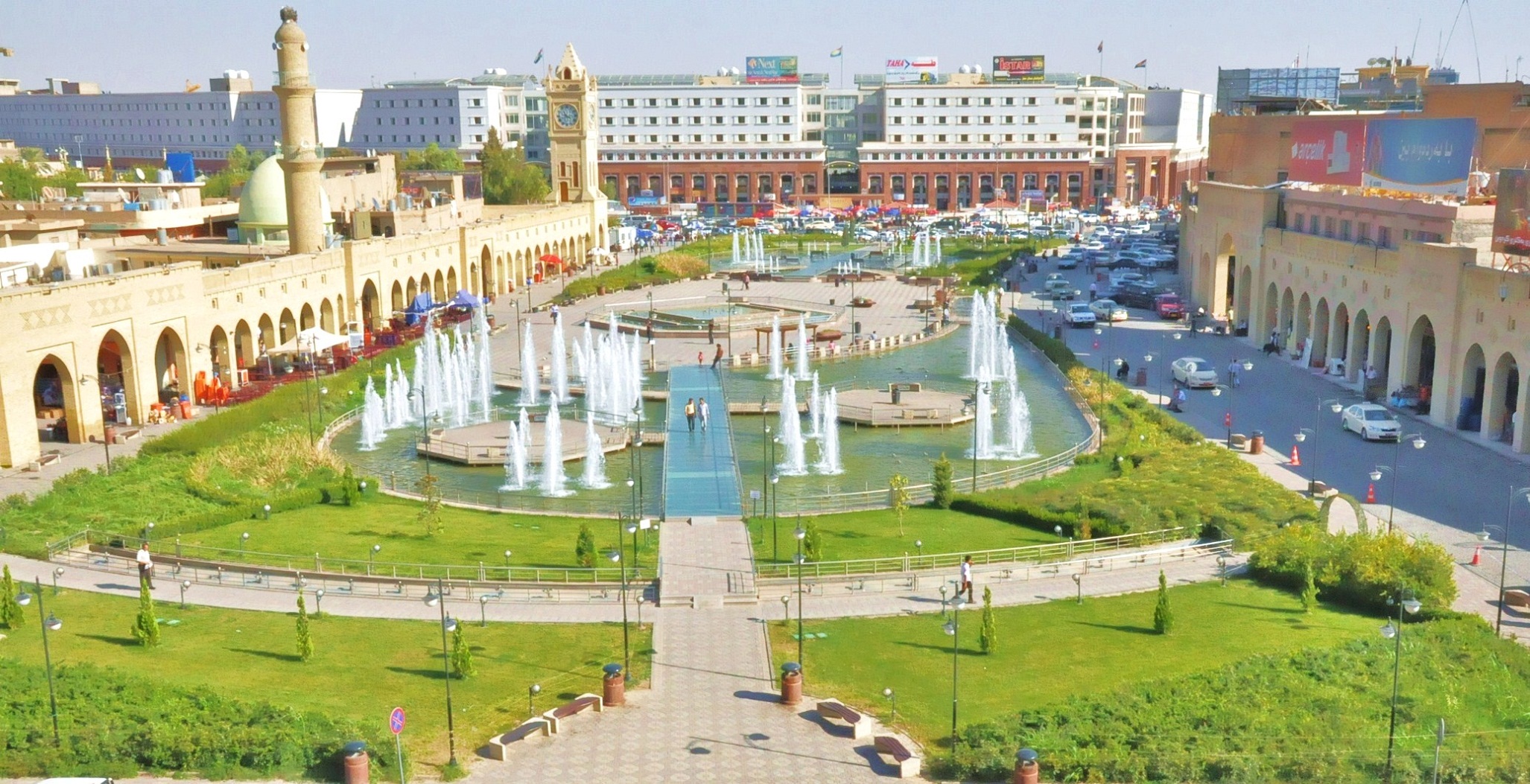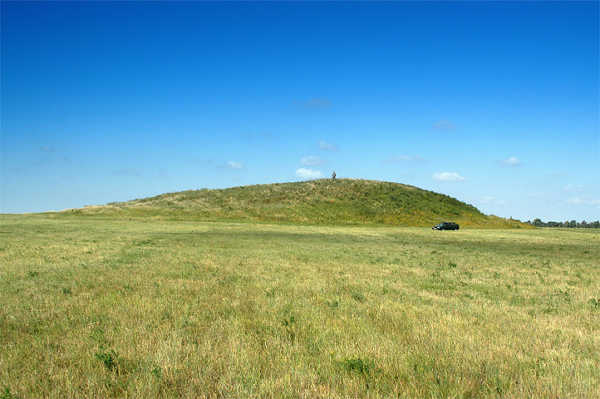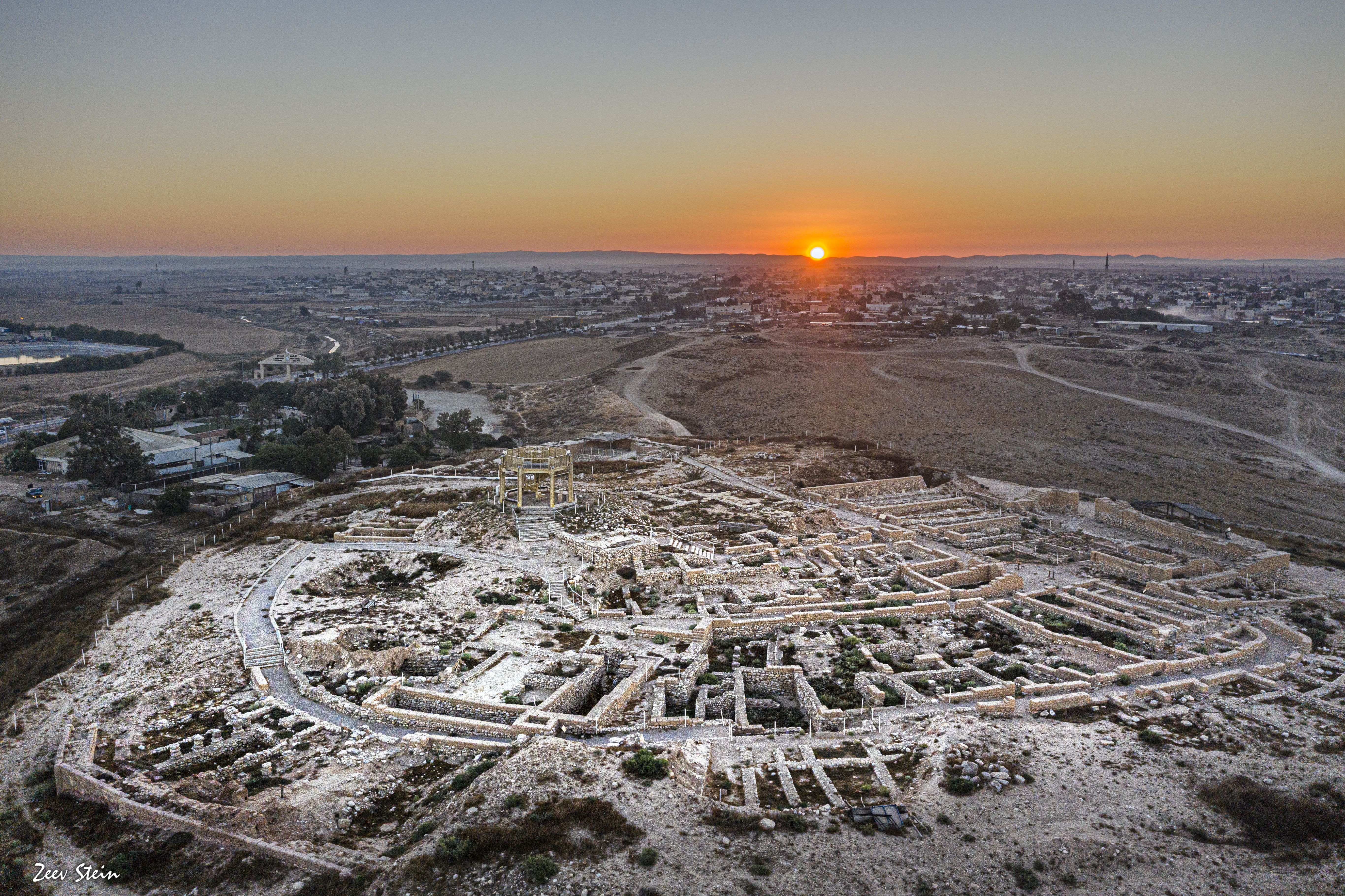|
Tell Begum
Tell Begum is a tell, or archaeological settlement mound, in Iraq. It is located near Said Sadiq in the Shahrizor Plain in Iraqi Kurdistan. The archaeological site consists of a steep conical mound high, and a lower mound. It covers an area of . The site was first investigated in 1960 by a team of Iraqi archaeologists. In 2013, a new excavation was carried out by archaeologists from Leiden University Leiden University (abbreviated as ''LEI''; ) is a Public university, public research university in Leiden, Netherlands. Established in 1575 by William the Silent, William, Prince of Orange as a Protestantism, Protestant institution, it holds the d .... This project restudied the older excavations and also conducted limited new excavations. The oldest excavated layers date to Late Halaf period. After an apparent hiatus in occupation, the site was resettled in the Late Chalcolithic 1 (LC1) period and continued to be in use into the Late Chalcolithic 3 (LC3) period (4300-3600 BC). ... [...More Info...] [...Related Items...] OR: [Wikipedia] [Google] [Baidu] |
Tell (archaeology)
In archaeology, a tell (from , ', 'mound' or 'small hill') is an artificial topographical feature, a mound consisting of the accumulated and stratified debris of a succession of consecutive settlements at the same site, the refuse of generations of people who built and inhabited them and natural sediment. Tells are most commonly associated with the ancient Near East but are also found elsewhere, such as in Southern Europe, Southern and parts of Central Europe, from Greece and Bulgaria to Hungary and Spain,, see map. and in North Africa. Within the Near East they are concentrated in less arid regions, including Upper Mesopotamia, the Southern Levant, Anatolia and Iran, which had more continuous settlement. Eurasian tells date to the Neolithic, the Chalcolithic and the Bronze and Iron Ages. In the Southern Levant the time of the tells ended with the conquest by Alexander the Great, which ushered in the Hellenistic period with its own, different settlement-building patterns. Many t ... [...More Info...] [...Related Items...] OR: [Wikipedia] [Google] [Baidu] |
Iraq
Iraq, officially the Republic of Iraq, is a country in West Asia. It is bordered by Saudi Arabia to Iraq–Saudi Arabia border, the south, Turkey to Iraq–Turkey border, the north, Iran to Iran–Iraq border, the east, the Persian Gulf and Kuwait to the Iraq–Kuwait border, southeast, Jordan to Iraq–Jordan border, the southwest, and Syria to Iraq–Syria border, the west. The country covers an area of and has Demographics of Iraq, a population of over 46 million, making it the List of countries by area, 58th largest country by area and the List of countries by population, 31st most populous in the world. Baghdad, home to over 8 million people, is the capital city and the List of largest cities of Iraq, largest in the country. Starting in the 6th millennium BC, the fertile plains between Iraq's Tigris and Euphrates rivers, referred to as Mesopotamia, fostered the rise of early cities, civilisations, and empires including Sumer, Akkadian Empire, Akkad, and Assyria. Known ... [...More Info...] [...Related Items...] OR: [Wikipedia] [Google] [Baidu] |
Said Sadiq
Said Sadiq (; ) is a city located in the Sulaymaniyah Governorate within the Kurdistan Region of Iraq. The nearby archaeological site of Tell Begum Tell Begum is a tell, or archaeological settlement mound, in Iraq. It is located near Said Sadiq in the Shahrizor Plain in Iraqi Kurdistan. The archaeological site consists of a steep conical mound high, and a lower mound. It covers an area of ... indicates that the area was inhabited as early as the Late Halaf period. Notable people * Wali Dewane (1826–1881), poet References District capitals of Iraq Sulaymaniyah Governorate Kurdish settlements in Iraq {{kurdistan-stub ... [...More Info...] [...Related Items...] OR: [Wikipedia] [Google] [Baidu] |
Shahrizor
Shahrizor or Shahrezur () is a fertile plain in the Kurdistan Region of Iraq, situated in the Sulaymaniyah Governorate, Silêmanî Governorate and west of Avroman, Hewraman. Shahrizor plain is watered by the Tributary, tributaries of Tandjaro river which flows to Diyala River, Diyala and Tigris rivers. Etymology The name ''Shahrazur'' is likely derived from two Iranian languages, Iranian words: ''shah'' (king) and (forest), hence sharazur meaning ''kingly forest (royal forest)''. Ernst Herzfeld, Herzfeld based on the fact that in classical sources the name was spelt with an initial /s/ rather /sh/, suggested ''white forest'', which he connected with the Avestan legends. Indeed, to this day the plain of Sharazur has an important status among adherents of native religion of Yarsan as a holy and sacred region where God descends for the Last Judgement. The 12th century geographer Yaqut al-Hamawi, based on folk etymology interpreted origin of name Sharazur, from the name of the son ... [...More Info...] [...Related Items...] OR: [Wikipedia] [Google] [Baidu] |
Iraqi Kurdistan
Iraqi Kurdistan or Southern Kurdistan () refers to the Kurds, Kurdish-populated part of northern Iraq. It is considered one of the four parts of Greater Kurdistan in West Asia, which also includes parts of southeastern Turkey (Northern Kurdistan), northern Syria (Western Kurdistan), and northwestern Iran (Eastern Kurdistan). Much of the geographical and cultural region of Iraqi Kurdistan is part of the Kurdistan Region (KRI), a semi-autonomous administrative division, autonomous region recognized by the Constitution of Iraq. As with the rest of Kurdistan, and unlike most of the rest of Iraq, the region is inland and mountainous. Etymology The exact origins of the name ''Kurd'' are unclear. The suffix ''-stan'' is an Iranian languages, Iranian term for region. The literal translation for Kurdistan is "Land of Kurds". The name was also formerly spelled ''Curdistan''. One of the ancient names of Kurdistan is ''Corduene''.A.D. Lee, ''The Role of Hostages in Roman Diplomacy with ... [...More Info...] [...Related Items...] OR: [Wikipedia] [Google] [Baidu] |
Archaeological Site
An archaeological site is a place (or group of physical sites) in which evidence of past activity is preserved (either prehistoric or recorded history, historic or contemporary), and which has been, or may be, investigated using the discipline of archaeology and represents a part of the archaeological record. Sites may range from those with few or no remains visible above ground, to buildings and other structures still in use. Beyond this, the definition and geographical extent of a "site" can vary widely, depending on the period studied and the theoretical approach of the archaeologist. Geographical extent It is almost invariably difficult to delimit a site. It is sometimes taken to indicate a settlement of some sort, although the archaeologist must also define the limits of human activity around the settlement. Any episode of deposition, such as a hoard or burial, can form a site as well. Development-led archaeology undertaken as cultural resources management has the disad ... [...More Info...] [...Related Items...] OR: [Wikipedia] [Google] [Baidu] |
Leiden University
Leiden University (abbreviated as ''LEI''; ) is a Public university, public research university in Leiden, Netherlands. Established in 1575 by William the Silent, William, Prince of Orange as a Protestantism, Protestant institution, it holds the distinction of being the oldest university in the Netherlands of today. During the Dutch Golden Age scholars from around Europe were attracted to the Dutch Republic for its climate of intellectual tolerance. Individuals such as René Descartes, Rembrandt, Christiaan Huygens, Hugo Grotius, Benedictus Spinoza, and later Baron d'Holbach were active in Leiden and environs. The university has seven academic faculties and over fifty subject departments, housing more than forty national and international research institutes. Its historical primary campus consists of several buildings spread over Leiden, while a second campus located in The Hague houses a liberal arts college (Leiden University College The Hague) and several of its faculties. It i ... [...More Info...] [...Related Items...] OR: [Wikipedia] [Google] [Baidu] |
Halaf Culture
The Halaf culture is a prehistoric period which lasted between about 6100 BC and 5100 BC. The period is a continuous development out of the earlier Pottery Neolithic and is located primarily in the fertile valley of the Khabur (Euphrates), Khabur River (Nahr al-Khabur), of south-eastern Turkey, Syria, and northern Iraq, although Halaf-influenced material is found throughout Greater Mesopotamia. While the period is named after the site of Tell Halaf in north Syria, excavated by Max von Oppenheim between 1911 and 1927, the earliest Halaf period material was excavated by John Garstang in 1908 at the site of Sakce Gözü. Small amounts of Halaf material were also excavated in 1913 by Leonard Woolley at Carchemish, on the Turkish/Syrian border. However, the most important site for the Halaf tradition was the site of Tell Arpachiyah, now located in the suburbs of Mosul, Iraq. The Halaf period was succeeded by the Halaf-Ubaid Transitional period, which comprised the late Halaf (c. 5400 ... [...More Info...] [...Related Items...] OR: [Wikipedia] [Google] [Baidu] |
Archaeological Sites In Iraq
Archaeology or archeology is the study of human activity through the recovery and analysis of material culture. The archaeological record consists of artifacts, architecture, biofacts or ecofacts, sites, and cultural landscapes. Archaeology can be considered both a social science and a branch of the humanities. It is usually considered an independent academic discipline, but may also be classified as part of anthropology (in North America – the four-field approach), history or geography. The discipline involves surveying, excavation, and eventually analysis of data collected, to learn more about the past. In broad scope, archaeology relies on cross-disciplinary research. Archaeologists study human prehistory and history, from the development of the first stone tools at Lomekwi in East Africa 3.3 million years ago up until recent decades. Archaeology is distinct from palaeontology, which is the study of fossil remains. Archaeology is particularly important for learn ... [...More Info...] [...Related Items...] OR: [Wikipedia] [Google] [Baidu] |
Sulaymaniyah Governorate
Sulaymaniyah Governorate (; ; ) or Sulaymaniyah Province is a Governorates of Iraq, governorate in the Kurdistan Region of Iraq. Its largest city is Sulaymaniyah. Halabja Governorate was formerly the Halabja District, Sulaymaniyah Governorate, Halabja District of Sulaymaniyah, until it became a separate governorate in 2014. Provincial government * Governor: Haval Abubakir * Deputy Governor: Ahmed Ali Ahmed * Provincial Council Chairman (PCC): Azad Mohammad Amin Districts See also * Hazar Merd Cave * Qasr-e Shirin, Parviz border crossing * Kermanshah Province * Lake Kanaw References External links * Iraq Inter-Agency Information & Analysis Unit Reports, Maps and Assessments of Iraq's Governorates from the UN Inter-Agency Information & Analysis Unit Sulaymaniyah Governorate, Governorates of Iraq Geography of Iraqi Kurdistan {{Iraq-geo-stub ... [...More Info...] [...Related Items...] OR: [Wikipedia] [Google] [Baidu] |
Ubaid Period
The Ubaid period (c. 5500–3700 BC) is a prehistoric period of Mesopotamia. The name derives from Tell al-'Ubaid where the earliest large excavation of Ubaid period material was conducted initially in 1919 by Henry Hall, Leonard Woolley in 1922-1923, and later by Pinhas Delougaz in 1937.P. Delougaz, "A Short Investigation of the Temple at Al-’Ubaid", Iraq, vol. 5, pp. 1–11, 1938 Excavations continue into the present day. In Southern Mesopotamia, this period marks the earliest known human settlements on the alluvial plain, although it is likely earlier periods exist that are obscured under the alluvium. In the south it has a very long duration between about 5500 and 3800 BC when it is replaced by the Uruk period. In Northern Mesopotamia the period runs only between about 5300 and 4300 BC. It is preceded by the Halaf period and the Halaf-Ubaid Transitional period and succeeded by the Late Chalcolithic period. History of research The excavators of Eridu and Tell ... [...More Info...] [...Related Items...] OR: [Wikipedia] [Google] [Baidu] |
Tells (archaeology)
In archaeology, a tell (from , ', 'mound' or 'small hill') is an artificial topographical feature, a mound consisting of the accumulated and stratified debris of a succession of consecutive settlements at the same site, the refuse of generations of people who built and inhabited them and natural sediment. Tells are most commonly associated with the ancient Near East but are also found elsewhere, such as in Southern and parts of Central Europe, from Greece and Bulgaria to Hungary and Spain,, see map. and in North Africa. Within the Near East they are concentrated in less arid regions, including Upper Mesopotamia, the Southern Levant, Anatolia and Iran, which had more continuous settlement. Eurasian tells date to the Neolithic, the Chalcolithic and the Bronze and Iron Ages. In the Southern Levant the time of the tells ended with the conquest by Alexander the Great, which ushered in the Hellenistic period with its own, different settlement-building patterns. Many tells across the ... [...More Info...] [...Related Items...] OR: [Wikipedia] [Google] [Baidu] |







